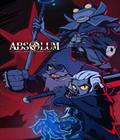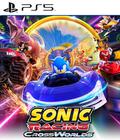I tend to get lucky with bugs. There have been several occasions on which I've enjoyed a game, reviewed it, and then — a few days later — read reviews bemoaning all sorts of bugs and issues. If we assume that I somehow manage to avoid these things while all other players suffer, my experience with Disciples III: Renaissance may mean that it'd make your computer explode.
"Bug-ridden" is an understatement when it comes to this particular fantasy turn-based strategy title. Generally speaking, things play out as they would in a typical Disciples or Heroes of Might & Magic game: You move your heroes around the map, capturing towns and resources, attacking wandering monsters and battling the heroes of other beasties. Then your hero will suffer some sort of existential crisis and disappear completely from the game, forcing you to load your last save.
Or perhaps the entire map will get covered with magical computer snow that turns the entire thing white, preventing you from seeing anything. Or maybe a mission trigger will fail to work properly, meaning that, although you've completed an objective, the next one won't appear, necessitating either a reload or a restart of the map when you realize what happened. Even when bugs aren't involved, there are elements of shoddiness; for some reason, you can see the amount of resources the AI has during its turn, and several items and spells have error codes instead of names.
In a bit of a shift, the game — when it works as intended — is closer to the Heroes of Might & Magic series than it is to previous Disciples games, mostly because of the changes to combat. Unlike its predecessors, Disciples III features a full hex-based battlefield in which units can move around, and particular hexes grant bonuses to different types of attack damage. It's a nice dynamic, forcing you to consider movement ranges and positioning. If you have soldiers near a melee damage hex, there's a good chance that a fast-moving opponent could get onto it and cause serious damage. Likewise, moving a unit off a bonus hex — even if there are no enemies nearby — could cause trouble later.
This is the idea, anyway, but the AI prevents it from working as intended. The computer is ludicrously easy to exploit; the most you can say for it is that it will take advantage of the bonus hexes if the opportunity presents itself. Beyond that, it'll never notice if it needs to focus fire, or if it should keep a unit out of movement range of your troops, or, worst of all, what it needs to kill first. This is most obvious when enemies attack your Guardian Nodes, which are the defenses that sit on top of your resources. Most Guardian Nodes, after leveling a little, gain a combat ability that lets them endlessly summon reinforcements. The AI will always go for the reinforcements first, as they're normally the closest targets to them. If they can't kill your summons in one combat round, then you'll eventually win by sheer attrition. Harder difficulties don't appear to change up the combat AI, either, only serving to make the AI on the overworld map more aggressive. It's difficult to argue that the change to hex-based combat is a positive one.
I've complained a lot thus far, but Disciples III is far from a wreck. While they're purely cosmetic, there are some rather nice touches when it comes to the design and graphics; areas controlled by demons are blackened and charred, with trees dead and burned, but once an elven unit takes over the area, everything becomes beautiful and autumnal. Units are varied, and there's a simple joy to be found in experimenting with the tech paths in each mission to see how the different units look and upgrade. You see, once a unit gains a certain amount of combat experience, it levels up and transforms into a different unit, based on which upgrade structures you've built at your capital on that particular map. Depending on which structure path you've chosen, a higher-level mage unit might do massive damage against a single target, or it might inflict lesser damage on every enemy unit in battles. Damage types and special abilities also change, and each of these units look wonderfully unique.
Your heroes level up in a more RPG-esque fashion. Each level they gain affords three points that can be spent on a number of stats that raise things like attack damage and health, but it also grants points that can be spent on a bonus grid. By far, this grid is the most interesting part of leveling; you can only spend points on squares adjacent to those you already possess, meaning that you need to work out the most efficient way around the grid to quickly get the bonuses you want. Some are comparatively boring stat boosts while others grant powers, like a resurrection ability, the transformation of a foe's unit, or the ability to place obstructions on the battlefield. Some squares — arguably the most important — seem to be the only way to get leadership.
This factors into the one good thing about the combat: choice. Unlike so many other turn-based strategy titles, you can't build up an army of 10 billion peasants to whittle down your foes. Your heroes' leadership stat determines how many units they can have under their control at any one time; few army battles will exceed seven-on-seven. As such, making sure you have the right mix of units is imperative because you can't win through sheer numbers. You can, however, win through a mix of AI abuse and some hilariously imbalanced hero powers, but even then, you'll need at least a reasonably seasoned force to survive.
Disciples III is also a huge, huge game. Barring hotseat multiplayer (which is always nice to see) and the two (yes, there really are only two) stand-alone single-player maps, there are three campaigns — one for the human Empire, one for the demons, and one for the elves. Each consists of around seven missions, and each of those missions is big. Really big. Doing nothing but following the primary objectives will let you get through each in a few hours, but exploring every nook and cranny and completing all side-quests can easily take upward of five hours per map.
The overriding question is whether or not Disciples III: Renaissance is worth the gargantuan amount of time you can put into it. It's desperately inferior to both the excellent King's Bounty and the game's own predecessor, Disciples II, and if you haven't played either of these, then they and the Heroes of Might & Magic titles would provide more entertainment. Even if you have played everything else, I still can't recommend Disciples III in any real way. For everything the game gets right — the RPG-esque leveling, the unit designs, the way the overworld visuals change based on who owns the territory, the oh-so-important One More Turn feeling — it gets so much wrong in so many basic ways. There's the poor AI, the unskippable 15-second casting animations, the complete inability to trust the auto-battle function, the bugs, the sloppiness, and the nagging feeling that it's not quite finished. It's far from the worst HoMM-alike out there, but Disciples III has far too many flaws to recommend, and considering the excellent alternatives, there is little reason to pick it up.
Score: 5.5/10
More articles about Disciples III: Renaissance











 Disciples III: Renaissance is a standalone turn-based RPG/strategy game set in an expansive fantasy world, offering players action, adventure and glory. Stunning 3D environments, three playable races, and multiplayer functionality all combine to offer an outstanding gameplay experience.
Disciples III: Renaissance is a standalone turn-based RPG/strategy game set in an expansive fantasy world, offering players action, adventure and glory. Stunning 3D environments, three playable races, and multiplayer functionality all combine to offer an outstanding gameplay experience.






































